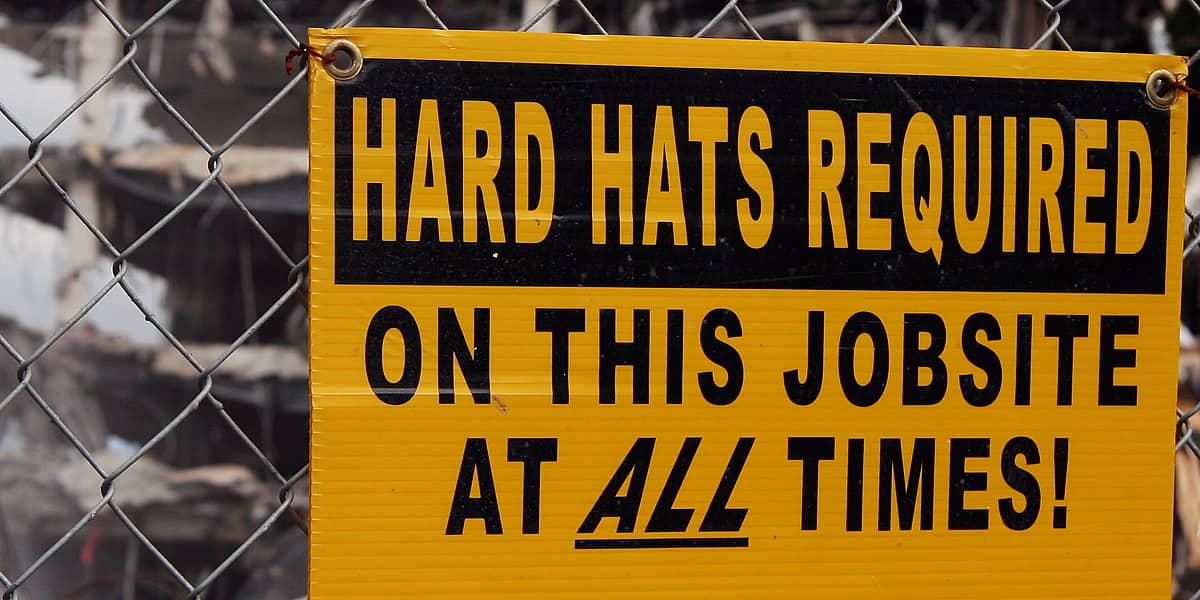No job site is perfectly safe. Sometimes a job that looks really clean can give a false sense of security. Workers always have to be aware of their surroundings and stay alert, even on a clean site.
—Pete Dittemore, General Manager, Sierra Insulation Contractors, Ontario, California
Absolutely no work being performed, and no evidence of any construction taking place.
A perfectly safe job site looks like one where every individual working is following and wearing all safety protocol. They also follow all safety rules continuously.
—Carol Junz, Controller, Exterior Erecting Services, Burlington, New Jersey
One in which there is zero activity with no access available.
CLEAN floor with no trip hazards, great lighting and obtainable schedule—as close to perfect as it gets!!!
—Ryan Drawe, General Superintendent, Heartland Acoustics & Interiors, Englewood, Colorado
Looks like your company is not going to make any money!
—D S Walls, Charlotte, North Carolina
No teenagers.
—Chris Ball
A perfectly safe job is a pipe dream. By now we all should be aware of hazards. But for me it begins and ends with housekeeping
Smooth, flat, undisturbed, dirt—with nothing on it.
- Preconstruction meeting on site with the trades to lay down the rules.
- Good signage around the site regarding potential hazards—in all languages represented on site.
- MSDSs in the jobsite office trailer.
- Monday morning jobbox safety meetings weekly.
- Coordination of the trades so that either nobody is working under others or proper overhead protection is provided.
- Davits on the roof for swings and Genies, which are typically deleted in cost-cutting measures.
- Electrical cords run overhead in the building to eliminate them as a tripping hazard.
- Materials stored in the building done so out of the way and organized.
- No trash or miscellaneous construction materials lying all over the place.
- Hard hats, safety glasses, boots, high-visibility vests in use by everyone on site.
- Nobody riding in the back of pickup trucks.
- Backup signals or a flagman for vehicles and equipment.
- Workers looking out of one another regarding safety issues.
- If there are empty plastic water bottles lying around they are crushed, not simply capped, which presents a fall hazard.
- No overhead electrical lines that can be snagged by equipment.
- No power lines near scaffold or they have been blanketed by the power company.
- Fire extinguishers near any petroleum-fueled equipment.
- Fuel properly stored—in a containment bed to collect spillage, not indoors.
- A safety party given at the end of a project—with gifts—for safe performance.
- An eyewash station available for debris in eyes.
- A handwash station with rinse water and paper towels.
- Universal knowledge of the nearest medical facility—hospital or urgent care.
- Short basic first aid knowledge provided at job commencement.
- Depending on the size of the job, a fulltime safety monitor who aids the jobsite community to avoid accidents and violations.
- Voluntary compliance meeting with OSHA or the state equivalent to walk the site and evaluate its safety and to provide guidance—this is free of charge.
—Rob Aird, President, Aird Incorporated, Frederick, Maryland




